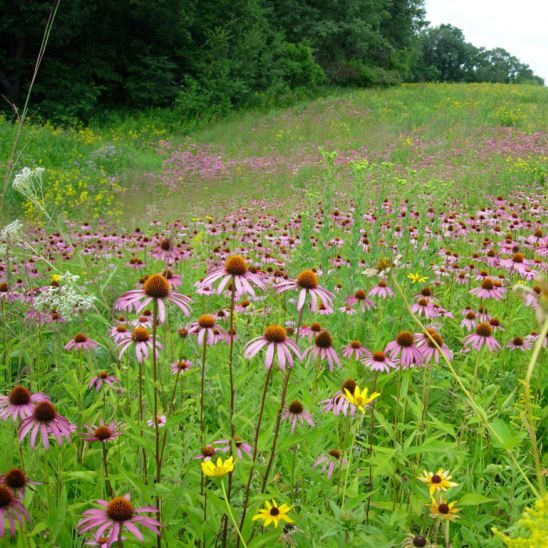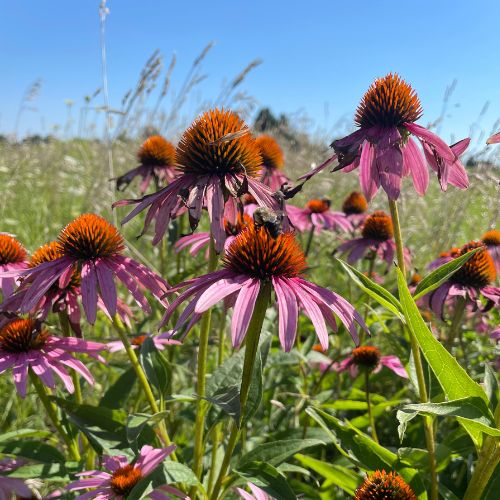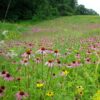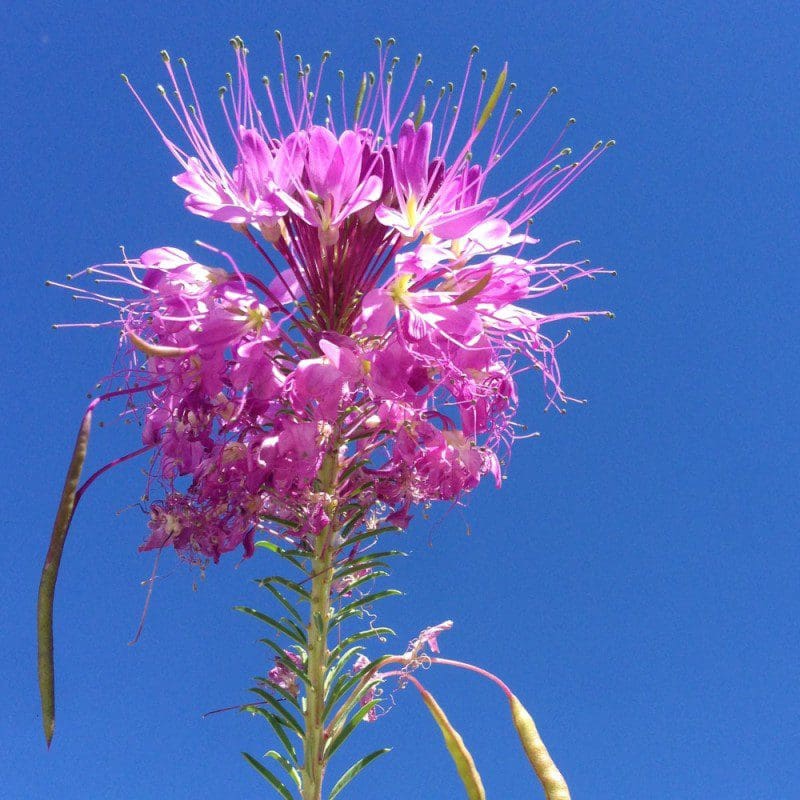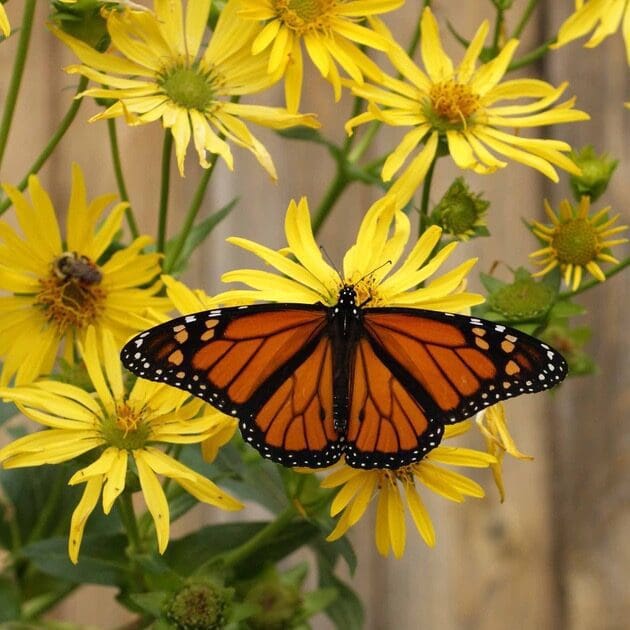Min. to Max. Annual Precipitation
60in.
Average Max. Height
Purple Coneflower (Echinacea purpurea) is a perennial flowering plant native to the central and eastern United States. Purple Coneflower prefers well-drained soils like sandy or loamy types but it can tolerate clay. Echinacea purpurea thrives in full sun but can tolerate partial shade.
General Description:
Purple Coneflower (Echinacea purpurea) is a perennial flowering plant native to the central and eastern United States. It is widely admired for it striking blooms and adaptability to various growing conditions. Echinacea purpurea commonly grows between 2-5 feet tall. The flowers are large and daisy-like with drooping, purple-pink petals surrounding a prominent spiny, orange-brown central cone. The leaves are lance-shaped, dark green leaves with a rough texture, growing along upright stems. Purple Coneflower typically blooms from late spring to early fall. With its deep tap root Purple Coneflower is very drought tolerant once established.
Uses:
Purple Coneflower is commonly used for wildlife, ornamental purposes, erosion control and has been historically used for medicinal purposes too.
Planting Conditions:
Purple Coneflower prefers well-drained soils like sandy or loamy types but it can tolerate clay. Echinacea purpurea thrives in full sun but can tolerate partial shade. This coneflower prefers neutral soils with a pH range of 6.0-7.5. Echinacea purpurea thrives in areas that receive 15-30 inches of annual precipitation. This flower performs best at elevations above 6,000 feet to ensure adequate sunlight, protection from harsh winds that may dry out plant. The best times to plant are in late fall for a natural stratification or early spring. Purple Coneflower performs well in areas with hot summers and tolerates occasional cold snaps.
Establishment:
When planting Purple Coneflower make sure to clear area from weeds, grass and other competing vegetation. Loosen the soil to a depth of 12-15 inches for better root penetration. The seed of Purple Coneflower does have a hard shell that requires a stratification process. This process can be accomplished by either planting in late fall where winter provides the natural stratification process. When planting in early spring a manual method will be recommended. This can be accomplished by refrigerating the seeds in moist sand or a damp paper towel for 4-6 weeks prior to planting. Plant in areas that receive full sun (at least 6+ hours of direct sun). If planted in shade it may produce fewer flowers.
After planting keep soil evenly most (not waterlogged) until seedlings are 2-4 inches tall. Water roughly 1-2 times a week during dry periods in the first growing season. Once the plants are established reduce watering frequency because at this point it has developed its deep tap root that helps with drought tolerance.
Seeds typically germinate with in 10-20 days under proper conditions
Seeding Rate:
Broadcast rate: 8-12 pounds per acre or 1-3 pounds per 1,000 square foot.
Quick Plant Facts
| Scientific Name: | |
|---|---|
| Growth Height: | 2-5 feet |
| Broadcast Rate: | 8-12 lbs per pound |
| Max Sowing Depth | 1/8 to 1/4 inch |
| Elevation | up to 6,000 ft |
| pH Tolerance: | |
| Min. Precipitation: | 15 inches |
| Best Sowing Time: | Early Spring or Late Fall |
| Lifespan: | Perennial |
| Sun & Shade Tolerance: | Full Sun can tolerate some shade |
| Select a Package Size and Quantity | 1 oz. Envelope, 4 oz. Pouch (0.25 lbs.), 8 oz. Pouch (0.50 lbs.), 1 lb. (by the pound) |

